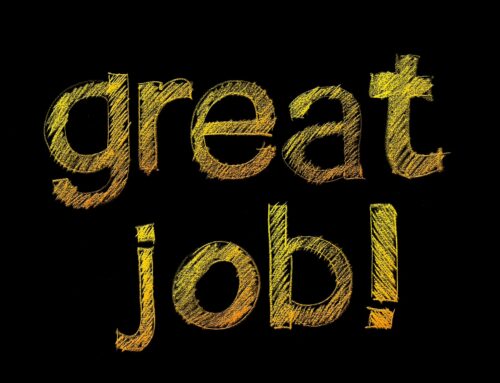“It always seems impossible until it’s done.” Nelson Mandela
April 10 is a big day for historical accomplishments. On this day in 1866, The American Society for Prevention of Cruelty to Animals was formed. In 1947, Jackie Robinson became the first African-American in Major League baseball and in 1955, Dr. Jonas Salk successfully tested the polio vaccine. In each instance, there was a time when these achievements were inconceivable. As Jimmy Fallon exclaimed recently on the final night of his late-night show, “Five years ago, this didn’t exist!” Now, his trademark late-night hashtags, thank-you notes and musical parodies are part of the Zeitgeist. Each milestone began with a vision and, invariably, encountered frustration before realization occurred. Where do you want to be a year from now?
Most goals worth accomplishing do not happen overnight. An essential resource to cultivate is resilience. There are various definitions of resilience. My favorite is from Merriam Webster: “The ability of something to return to its original shape after it has been pulled, stretched, pressed, bent, etc.” Life has a tendency to pull and stretch us in unexpected and sometimes unwanted ways. Resilience is the ability to shake off setbacks and keep moving forward. On April 15, 2013, dancer Adrianne Haslet-Davis lost part of her leg in the Boston Marathon bombing. It was a devastating injury and the chance of dancing or even teaching dance again was remote. However, according to the New York Daily News, she performed a rumba at a TED Conference in Vancouver on March 19 while wearing a prosthetic leg specially designed and made for her by the Massachusetts Institute of Technology’s Media Lab. “Haslet-Davis said with her dance she hopes it will inspire others ‘to reach for their goals and be proactive in their lives,'” the article said. How might you be inspired by her courage, determination and resilience?
Justice Sandra Day O’Connor, the first woman to sit on the U.S. Supreme Court, could not get a job when she graduated from law school. She was third in her class at Stanford Law School in 1952, graduated in two, rather than three years, served on the Stanford Law Review and received membership in the Order of the Coif, a legal honor society. Sounds like a sure thing for getting a great job, right?
In an interview with Terry Gross on NPR’s “Fresh Air,” O’Connor recalled seeing notices posted at Stanford from law firms inviting graduates to interview. “I called at least 40 of those firms and not one of them would give me an interview. They said ‘we don’t hire women.'” O’Connor told Gross, “I was quite downhearted by what I experienced. I finally heard that the district attorney in San Mateo County, Calif., had once had a woman lawyer on his staff so I contacted him for an interview, which he gave me.” According to O’Connor, the district attorney noted her fine record, but told her that he had used all available money that the county supervisors had given him to hire people. He said there was no cushion left and he was so sorry. O’Connor needed a job badly, so she said, “I will work for you for nothing if you will put me on and I’ll stay there until such time as the county supervisors give you a little more money so you can pay me something. It doesn’t matter what.” There were no spare offices for O’Connor, so she again found a way to bend the situation in her favor, offering to share the secretary’s office “if she doesn’t object.” That is how she became deputy county attorney for San Mateo, Calif.
Law graduates today are facing a difficult job market as O’Connor did, although for different reasons, and her creativity, adaptability and determination to get that first job, to get that foot in the door can serve as inspiration to consider what alternative routes might be available to overcome any obstacles. She conquered her “downhearted” state and created a job where there was none.
When we think of accomplishments, it is helpful to remember that failure is often a necessary precursor to success. For example, from 1878-80, Thomas Edison and his associates worked on at least 3,000 different theories to develop an efficient incandescent lamp. He said, “I was never myself discouraged, or inclined to be hopeless of success. I cannot say the same for my associates.” If you are not naturally resilient, think of it as building a muscle. One does not transform overnight from a single visit to the gym. If it’s your first time, you will be sore, just as you might ache from being rejected for a job. A sustained effort over time produces results. As in any pursuit, strategies can help get you there.
Maintain a positive attitude. This in itself may require some discipline and strategies if you are inclined to feel defeated by a set-back or roadblock. There are resources for you. For some people, it helps to think about people like Robinson and O’Connor and what they had to overcome. The only thing most people know about them now is how successful they became. Image boards, practicing gratitude, and writing down past accomplishments can also lend an assist in the positivity department. View whatever is getting you down as temporary, not permanent.
Enlist support. Depending on the goal, a partner, friend or posse can bolster and support you during difficult times. Some people hang pictures of those who inspire them or surround themselves with quotes. Your predecessors can be part of your support network. There is an incredible amount of support online too. Google a specific issue, and chances are you will find someone who has encountered it and has recommendations.
Train yourself to believe in your ability to overcome with data. Write down your strengths and examples of how you successfully coped with adversity in the past.
Welcome change. Practice being flexible in order to better adapt when a curve ball comes your way. One technique is to visualize scenarios where the unwanted event could be an opportunity to take a new direction. As Thomas Edison said, “I have not failed. I’ve just found 10,000 ways that won’t work.” You can also try being more open to small changes in plans, routines and assignments, reminding yourself that are working on your resilience muscle and observe what happens. Build on your success with bigger challenges.
Gain perspective by talking about the situation. Your own thoughts will often lead you along the same path to the same conclusions. Take advantage of being in a profession and seek out a colleague’s point of view. Two heads are better than one. As Albert Einstein said, “We can’t solve problems by using the same kind of thinking we used when we created them.”
Practice self-care. Solving problems is much harder if you aren’t sleeping, eating well, exercising or are overindulging in unhealthy habits. A friend who practices meditation recently noted that she tends to stop during periods of stress, just when she needs it the most. Awareness is the first step toward changing a behavior.
Do not transmute a reversal into a character flaw (i.e., I am so dumb for not seeing this coming). While it is important to be accountable for your actions, resist the temptation to blame yourself for what is beyond your control. Make a plan to recover and design the first one or two steps you can take to move forward.
As you become more resilient, you will move more quickly from problem to solution and, perhaps, an opportunity to explore new and different routes to reach your desired goals.
Reprinted with permission from the March 11, 2014 edition of “The Legal Intelligencer” © 2014 ALM Media Properties, LLC. All rights reserved. Further duplication without permission is prohibited. For information, contact 877-257-3382, reprints@alm.com or visit www.almreprints.com.







